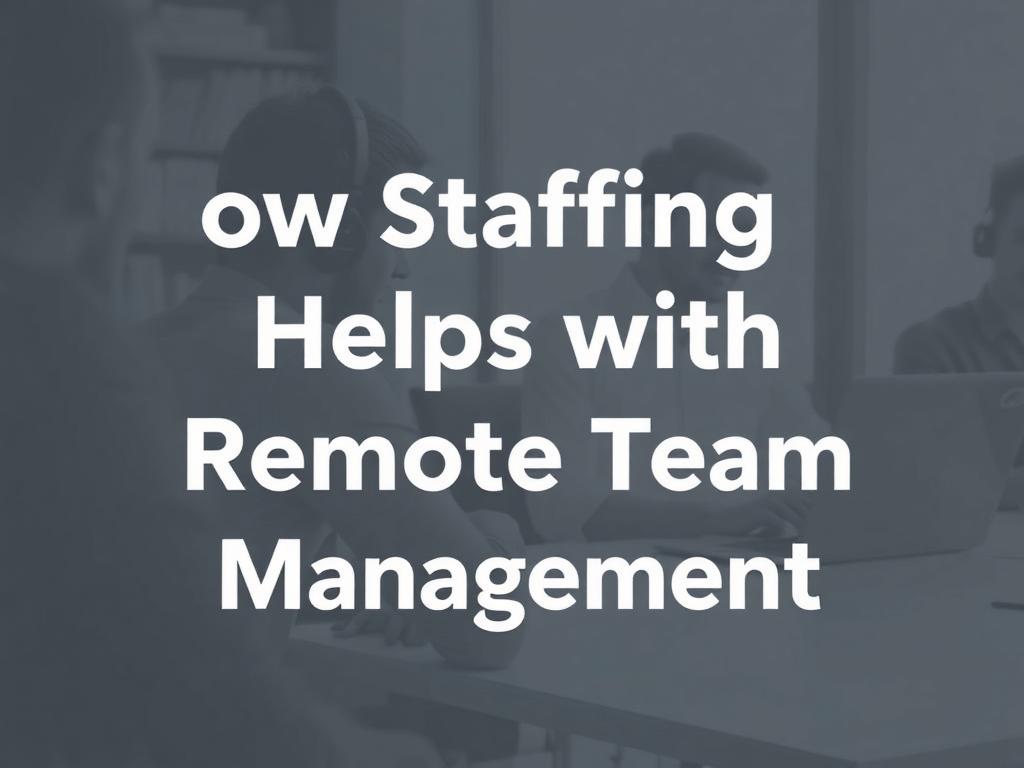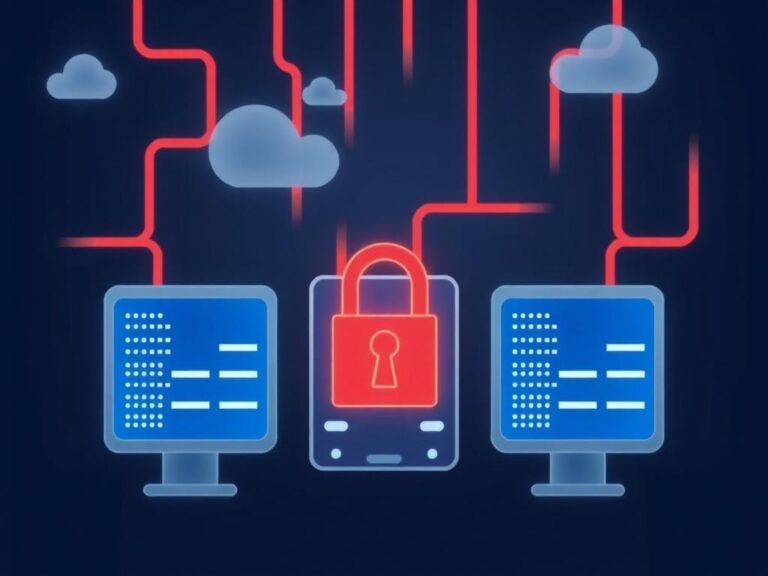How Staffing Software Helps with Remote Team Management
Managing remote teams can sometimes feel like trying to juggle invisible balls—everyone is scattered across different locations, working at different times, and relying heavily on communication tools. With the rise of remote work, companies are turning to innovative solutions to ensure productivity and seamless coordination. One of the most effective tools for navigating the complexities of remote team management is staffing software. This technology is transforming how managers organize, schedule, and communicate with their distributed teams, making remote work smoother and more efficient than ever before.
Understanding the Challenges of Remote Team Management
It’s no secret that managing a remote team presents unique challenges. Without the benefit of face-to-face interactions, managers often struggle with keeping track of employee availability, monitoring productivity, and maintaining strong communication channels. Add time zone differences and varying work schedules, and the complexity grows exponentially. Staffing software steps in to address these pain points by offering a centralized platform where everything – from scheduling to task delegation – can be handled in one place.
Key Challenges for Remote Managers
| Challenge | Description |
|---|---|
| Scheduling Conflicts | Coordinating work hours across different time zones often leads to overlapping assignments or downtime. |
| Communication Gaps | Delayed responses and miscommunications can slow projects down. |
| Tracking Productivity | Without direct supervision, gauging employee output and engagement can be difficult. |
| Team Morale | Remote workers may feel isolated or disconnected from the company culture. |
What Is Staffing Software?
Staffing software is a specialized tool designed to help companies plan, allocate, and manage human resources more effectively. For remote teams, these systems offer more than just scheduling — they provide a comprehensive framework for resource allocation, communication, and performance tracking. Many staffing software solutions integrate with popular communication and project management tools, creating a seamless experience for team managers and employees alike.
Main Features of Staffing Software
- Automated Scheduling: Assign shifts and projects based on availability and skill sets, reducing manual errors.
- Real-Time Availability Updates: View when employees are free or busy to plan accordingly.
- Task Management: Assign and monitor tasks within the platform.
- Performance Analytics: Track productivity and identify bottlenecks or high performers.
- Communication Tools: Built-in messaging or integrations help maintain ongoing dialogue.
How Staffing Software Enhances Remote Team Coordination
One of the biggest advantages of staffing software is its ability to keep remote teams coordinated regardless of physical distance. By having a centralized system that displays team members’ schedules and priorities, managers can avoid scheduling conflicts and ensure that work is evenly distributed. In addition, staffing software often includes features for managing availability, making it easier to accommodate flexible work hours or unexpected changes.
For example, if a team member unexpectedly needs to take leave, staffing software can instantly highlight others who are available to cover that role, helping to prevent workflow disruptions. This agility is crucial in remote settings where delays in communication could otherwise cause significant problems.
Improving Communication Across Remote Teams
One cannot underestimate the importance of communication in remote team management. Staffing software often complements communication platforms like Slack or Microsoft Teams, enabling managers to quickly reach out to individuals or groups. These integrations streamline interactions by syncing schedules and keeping everyone informed of task changes or deadlines.
Moreover, the transparency these tools provide reduces misunderstandings. Teams can see not only who is working on what but also upcoming assignments and potential overlaps, making collaborative planning much easier.
Boosting Productivity and Accountability Through Staffing Software

Remote workers enjoy flexibility, but this can sometimes lead to lapses in productivity if not managed properly. Staffing software helps by providing measurable data on task completion, working hours, and project milestones. Managers can analyze this data to offer support where necessary, inspire motivation, and recognize high achievers.
In addition, transparency through staffing software fosters accountability. When everyone knows their tasks are tracked and deadlines are visible to all team members, a sense of responsibility naturally emerges. This atmosphere promotes timely completion of work and encourages proactive communication when issues arise.
Key Productivity Benefits
| Benefit | How It Helps Remote Teams |
|---|---|
| Task Visibility | Employees understand expectations and priorities clearly. |
| Time Tracking | Managers can identify how time is spent and address inefficiencies. |
| Performance Metrics | Real-time reports highlight progress and areas needing attention. |
| Feedback Loop | Enables timely feedback between managers and remote workers. |
Supporting Remote Employee Engagement and Morale
Remote work can sometimes feel isolating, which might hurt team morale and engagement. Staffing software includes features that promote connection and inclusivity, such as virtual check-ins, recognition tools, and social communication channels. When employees feel connected, they’re more likely to stay motivated and committed.
Some staffing platforms even offer pulse surveys or feedback forms embedded within the system, making it easy to gauge employee satisfaction and identify areas for improvement. This ongoing engagement helps remote teams feel valued and understood, ultimately contributing to a healthier work environment.
Ways Staffing Software Boosts Engagement
- Regular automated reminders for check-ins and team meetings.
- Built-in employee recognition features to celebrate milestones.
- Easy access to support resources and HR services.
- Facilitated social interactions through informal chat channels.
Choosing the Right Staffing Software for Remote Management

With so many staffing software products available today, finding the right fit can be overwhelming. When selecting a system, consider factors such as ease of use, integration capabilities, scalability, and customization options. Since remote teams have varied needs, look for software that offers flexibility in scheduling, communication, and reporting.
It also helps to choose a vendor that provides excellent customer support and regular updates. A responsive support team can make the transition smoother and ensure that your software continuously adapts to new challenges or workflow changes.
Checklist for Selecting Staffing Software
| Criteria | Importance |
|---|---|
| User-Friendly Interface | High – Ensures all team members can adopt it quickly. |
| Integration with Existing Tools | High – Reduces disruption to current workflows. |
| Mobile Access | Medium – Allows remote workers to stay connected on the go. |
| Robust Reporting Features | High – Critical for productivity and resource management analysis. |
| Customizable Permissions | Medium – Maintains data security and relevant access control. |
Real-Life Examples of Staffing Software in Remote Team Management

Consider a marketing agency with remote creatives, strategists, and account managers spread across multiple countries. Using staffing software, the agency can streamline shift planning for global campaigns, monitor project progress in real-time, and manage client deadlines without confusion. The software’s performance dashboards help managers quickly identify which team members are over-allocated and redistribute tasks accordingly.
Similarly, a tech startup with developers working from home can track hours dedicated to sprints, generate reports for leadership, and keep all communications within the staffing platform integrated with their coding tools. This synergistic approach saves time and minimizes communication breakdowns.
Summary of Benefits Realized
- Improved scheduling accuracy and lowered downtime.
- Greater visibility into productivity and performance.
- Better communication flow and reduced misunderstandings.
- Enhanced employee satisfaction through transparent management.
Conclusion
Staffing software has revolutionized remote team management by simplifying scheduling, enhancing communication, and providing actionable insights into productivity. For managers navigating the complexities of distributed workforces, these tools serve as invaluable allies in maintaining cohesion, accountability, and motivation across virtual offices. As remote work becomes an enduring part of our professional landscape, investing in the right staffing software is not just a convenience but a necessity for any organization aiming to thrive with a remote team. Whether coordinating across time zones or fostering engagement from afar, the right software can transform potential chaos into smooth, efficient collaboration.






